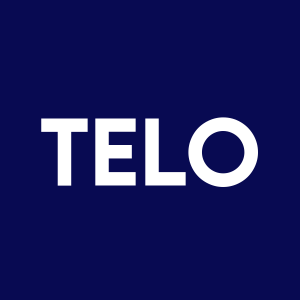Telomir Pharmaceuticals Announces Telomir-1 Resets the Body's Epigenetic Clock, Reverses DNA Methylation, and Restores Youthful Gene Regulation in an Ultra-Rare Accelerated Aging Animal Model of Werner Syndrome
Rhea-AI Summary
Positive
- Treatment demonstrated three-fold increase in telomere length, exceeding healthy wild-type levels
- Achieved 100% survival rate in treated groups compared to 15% mortality in untreated animals
- Successfully restored muscle mass and body weight to normal levels after 14 days of treatment
- Reduced oxidative stress levels by up to 50%
- Reversed age-related DNA hypomethylation, restoring methylation patterns above normal levels
Negative
- Still in preclinical phase with no human trials yet
- Results limited to rare disease model (Werner Syndrome)
- No FDA-approved treatments exist for comparison
- Potential risks and long-term effects remain unknown
News Market Reaction 1 Alert
On the day this news was published, TELO declined 4.74%, reflecting a moderate negative market reaction.
Data tracked by StockTitan Argus on the day of publication.
Treatment restored gene control, extended telomere length beyond healthy levels, reversed muscle and weight loss, reduced oxidative stress, and resulted in
MIAMI, FL / ACCESS Newswire / June 5, 2025 / Telomir Pharmaceuticals, Inc. (NASDAQ:TELO), or the "Company," an emerging leader in age-reversal science, today announced compelling new preclinical data demonstrating that its lead candidate, Telomir-1, administered orally, significantly increases telomere length, reverses body weight and muscle loss, and resets cellular aging markers in a validated animal model of Werner Syndrome (WS)-a rare genetic disorder also known as adult-onset progeria. These findings confirm and build upon the Company's previously reported results from a preclinical C. elegans study, which demonstrated that Telomir-1 restored lifespan and normalized physiological decline in animals with a wrn gene mutation.
Werner Syndrome: A Rare and Devastating Accelerated Aging Disorder
Werner Syndrome is a rare autosomal recessive disorder caused by mutations in the wrn gene, which plays a critical role in DNA repair and telomere maintenance. Patients typically begin showing signs of premature aging-such as graying hair, cataracts, diabetes, osteoporosis, and atherosclerosis-in their 20s or 30s. Median life expectancy is 40-50 years. There are currently no FDA-approved treatments.
To model this disease, the Company's study utilized the Sen57wrn-/-ND6-/+ zebrafish model, which replicates key features of Werner Syndrome, including telomere loss, mitochondrial dysfunction, retinal degeneration, muscle deterioration, and abnormal DNA methylation.
Key Preclinical Findings
1. DNA Methylation Reversal - Resetting the Genetic Clock
DNA methylation is one of the body's key mechanisms for controlling which genes are turned on or off. It works by attaching small chemical tags (called methyl groups) to DNA at locations known as CpG islands-which act like gene "on/off" switches. When methylation patterns are intact, cells know which genes to express and when.
However, with aging and disease, this regulatory system starts to break down - a phenomenon known as epigenetic drift. In these cases, genes that should be off may turn on inappropriately, and protective genes may be silenced. This malfunction in gene regulation is strongly linked to a wide range of chronic diseases including:
Cancer (via silencing of tumor suppressor genes)
Neurodegenerative diseases like Alzheimer's and Parkinson's
Autoimmune diseases such as lupus and multiple sclerosis
Metabolic conditions like Type 2 diabetes
Premature aging disorders like progeria and Werner Syndrome
In this study, Telomir-1 reversed age-related hypomethylation at two chromosomal regions, restoring methylation patterns to above-normal wild-type levels. This suggests that Telomir-1 may help restore healthy gene regulation and reset the body's epigenetic aging clock, reducing the risk of dysfunction in key biological systems.
2. Telomere Elongation - Rebuilding the Chromosomal Clock
Telomeres are the protective caps at the ends of chromosomes that shorten with each cell division and under stress. Telomere shortening is considered one of the hallmarks of aging. In the study, compared with the shortened length in the mutated animals, Telomir-1 increased telomere length by about three-fold. At the higher dose, telomere length significantly exceeded wild-type (healthy) levels, suggesting not only restoration but also potential enhancement of chromosomal integrity
3. Muscle Mass and Body Weight Recovery
In the wrn-mutant zebrafish model, animals exhibited a 50
4. Oxidative Stress Reduction
Reactive oxygen species (ROS), which damage cells and accelerate aging, were elevated in untreated animals. Telomir-1 reduced ROS levels by up to
5. Survival Benefit
Roughly
"These results reinforce my conviction that Telomir-1 may represent one of the most important scientific developments in the field of aging," said Erez Aminov, Chairman and CEO of Telomir. "While we remain in the preclinical phase, the consistency and strength of the data demand serious attention. My full commitment is behind advancing Telomir-1 toward human studies in the most responsible and rigorous way. The potential here is too significant to ignore."
"This is one of the most comprehensive rejuvenation profiles we've seen in a vertebrate aging model," added Dr. Itzchak Angel, Chief Scientific Advisor. "The ability to reverse both genomic and epigenetic instability while improving survival supports the growing potential of Telomir-1 as a foundational therapy for aging-related diseases."
Cautionary Note Regarding Forward-Looking Statements
This press release, statements of Telomir's management or advisors related thereto, and the statements contained in the news story linked in this release contain "forward-looking statements," which are statements other than historical facts made pursuant to the safe harbor provisions of Section 27A of the Securities Act of 1933, as amended, and Section 21E of the Securities Exchange Act of 1934, as amended. These risks and uncertainties include, but are not limited to, the potential use of the data from our studies, our ability to develop and commercialize Telomir-1 for specific indications, and the safety of Telomir-1.
Any forward-looking statements in this press release are based on Telomir's current expectations, estimates and projections only as of the date of this release. These risks and uncertainties include, but are not limited to, the potential use of the data from our studies, our ability to develop and commercialize Telomir-1 for specific indications and safety of Telomir-1. These and other risks concerning Telomir's programs and operations are described in additional detail in its Annual Report on Form 10-K for the fiscal year ended December 31, 2024, which is on file with the SEC. Telomir explicitly disclaims any obligation to update any forward-looking statements except to the extent required by law.
Contact Information
Helga Moya
info@telomirpharma.com
(786) 396-6723
SOURCE: Telomir Pharmaceuticals, Inc
View the original press release on ACCESS Newswire







